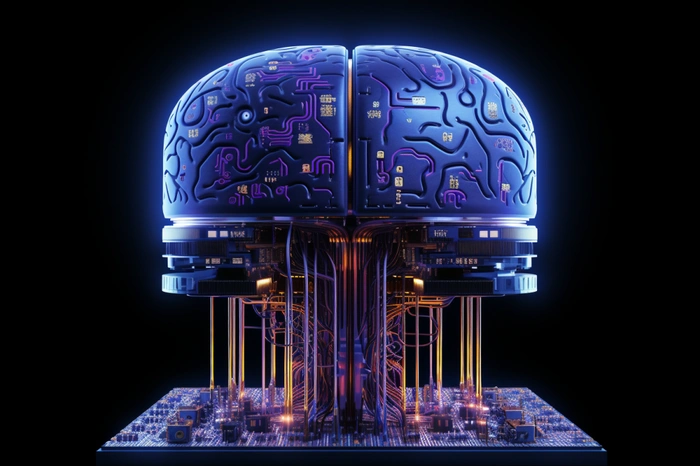If you would like to know more about the term you may have heard in science-fiction films and more recently associated with artificial intelligence. This quick guide will give you overview of what a Neural Processing Unit (NPU) is and how it works.
So, let’s start with the basics. A Neural Processing Unit is a specialized chip designed to accelerate artificial intelligence (AI) tasks, particularly neural network computations. Unlike a Central Processing Unit (CPU) or Graphics Processing Unit (GPU), an NPU is optimized for the matrix arithmetic that is the lifeblood of deep learning algorithms.
Key Components:
- Tensor Cores: For heavy mathematical lifting.
- Memory Bandwidth: To facilitate rapid data transfer.
- Parallel Processing Units: For simultaneous calculations.
In case you’re curious how NPUs came into existence, they were born out of the need for more efficient and faster computing in AI operations. Companies like Huawei and Apple introduced their NPUs in flagship products to handle machine learning tasks more proficiently than conventional processors could.
How does an NPU work?
To enhance your experience, let’s delve into the mechanics. NPUs operate in parallel, conducting multiple calculations at once, much like a GPU. However, the architecture of an NPU is more attuned to the specific types of calculations needed for neural network operations.
Simply follow these steps to understand the workflow:
- Data Ingestion: The NPU takes in raw data, be it images, text, or numbers.
- Matrix Operations: It performs the necessary matrix multiplications and additions.
- Activation Functions: Non-linear transformations are applied to the results.
- Data Output: The processed data is sent to the next layer of the neural network or returned as the final output.
What is a Neural Processing Unit?
From smartphones to data centers, NPUs are finding their way into an array of devices and platforms. Google’s Pixel phone uses its NPU for image processing. Tesla’s self-driving car tech also relies on NPUs for real-time decision-making.
- Smartphones: For voice recognition and camera enhancements.
- Healthcare: In diagnostic machinery.
- Automotive Industry: In autonomous driving systems.
Other articles you may find of interest on the subject of Neural Processing Units.
NPUs vs. CPUs and GPUs: A Deeper Dive
In the labyrinthine world of computing, it’s easy to get lost in the acronyms: CPU, GPU, and now NPU. So, why are NPUs gaining traction, and why can’t the good old CPUs and GPUs carry the load? To enhance your understanding, let’s break it down into more detailed segments.
Speed: How Fast Can They Go?
When we talk about speed, we’re discussing the ability to execute tasks in a shorter span of time. CPUs and GPUs are competent in running a variety of applications, but they aren’t tailored for the specific calculations that neural networks require. NPUs, on the other hand, are designed to excel at these tasks.
- CPU: Suitable for single-threaded tasks and general computing. However, when it comes to AI, it often lags behind in speed.
- GPU: Faster than a CPU for parallel processing tasks, often used in machine learning but not as specialized as an NPU.
- NPU: Exceptionally fast for AI tasks, as it is engineered to handle complex matrix calculations efficiently.
Efficiency: Power and Heat Management
If you’ve ever been concerned about the environmental impact or your electricity bill, efficiency matters. NPUs are designed to complete AI-specific tasks using less electrical power and generating less heat.
- CPU: Generally consumes more power for AI tasks due to its lack of specialized cores for neural network computations.
- GPU: Better than CPUs in terms of power efficiency for AI tasks, but still not as good as an NPU.
- NPU: Optimized for power efficiency, making it a greener choice for large-scale AI computations.
Specialization: The Jack of All Trades vs. The Master of One
In computing, specialization often leads to performance gains, and this is exactly where NPUs shine.
- CPU: A generalist. Good for a wide range of tasks but not specialized for any particular one.
- GPU: A bit more specialized than CPUs, often used for graphical rendering and some types of machine learning, but still not a specialist in neural network computations.
- NPU: The specialist. Designed with the sole purpose of accelerating neural network tasks, making it the most efficient option for AI computations.
Versatility vs. Niche Performance
- CPUs and GPUs: Highly versatile and can handle a range of tasks well but may require more time and power for AI-specific tasks.
- NPU: Limited in scope but excels in its area of specialization. If you’re building a system focused on AI, an NPU will likely be the most effective choice.
As AI becomes increasingly integrated into our daily lives, the importance of NPUs will continue to grow. Companies are investing heavily in refining NPU technology, which means we can expect advancements in speed, efficiency, and capabilities. So, it’s a good time to get acquainted with this transformative technology.
So, the next time you hear about NPUs, you’ll know exactly why they’re becoming an essential component in AI-focused technologies. The future is here, and NPUs are paving the way for more efficient and powerful AI applications.
Filed Under: Guides, Top News
Latest Aboutworldnews Deals
Disclosure: Some of our articles include affiliate links. If you buy something through one of these links, Aboutworldnews may earn an affiliate commission. Learn about our Disclosure Policy.







